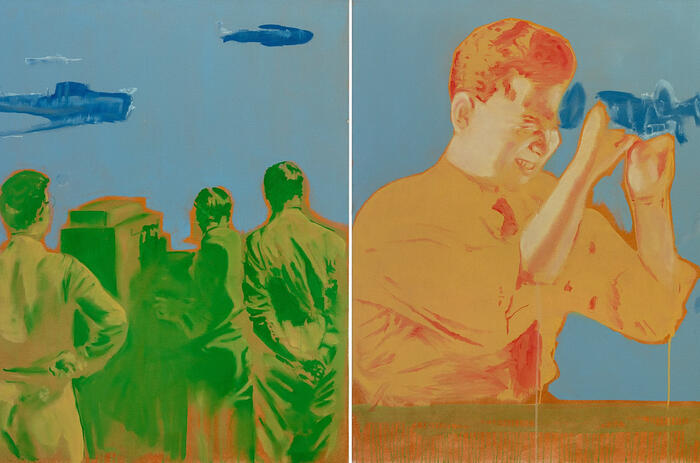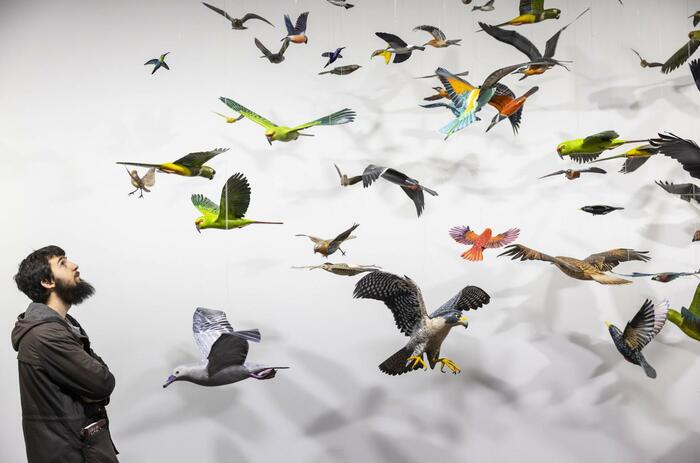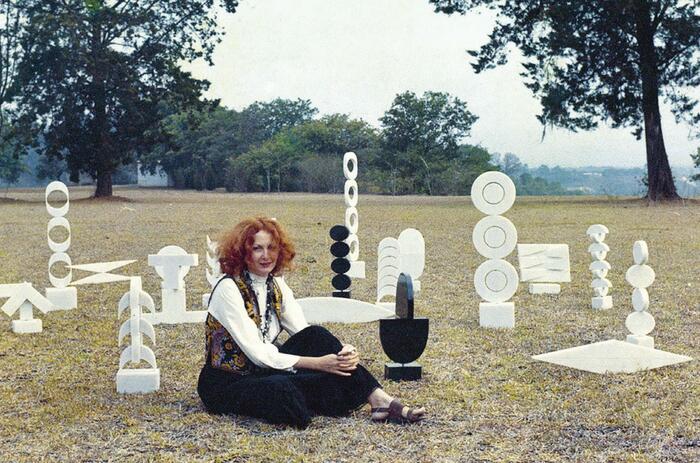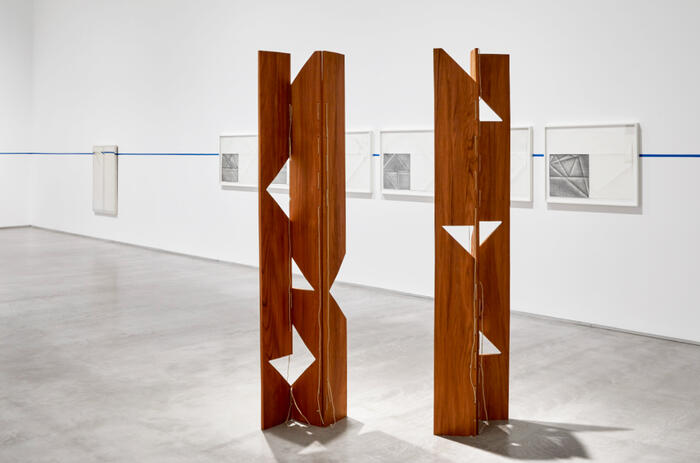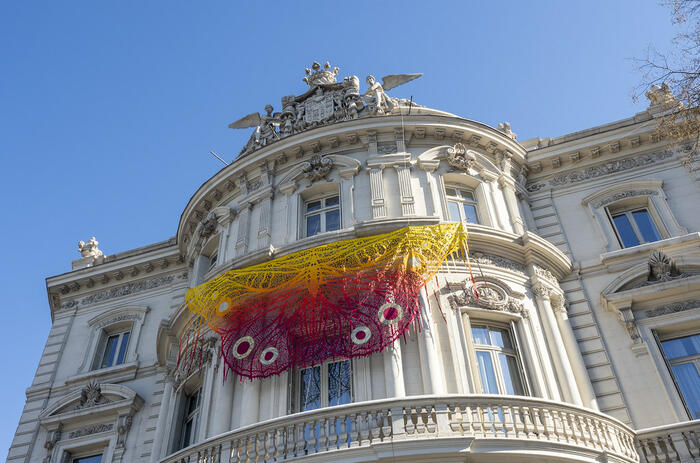LUCIAN FREUD. NEW PERSPECTIVES IN LONDON AND MADRID
The Museo Nacional Thyssen-Bornemisza, in collaboration with the National Gallery of London, presents a retrospective dedicated to the British painter Lucian Freud (1922-2011), on the occasion of the centenary of his birth.
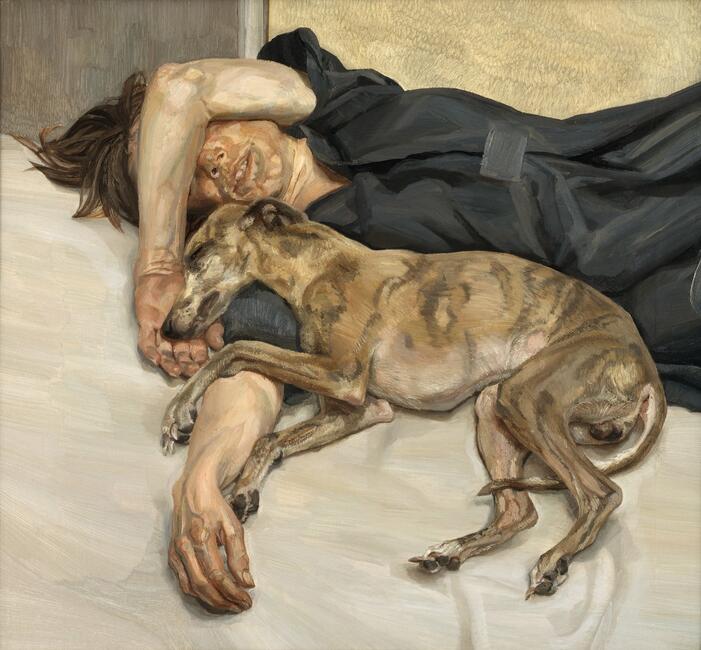
The exhibition, curated by Daniel Herrmann in London and by Paloma Alarcó in Madrid, brings together more than fifty works that showcase the seven decades of production of one of the most significant European artists of the 20th century. The extensive catalog, with texts by the curators and contributions by different specialists in his work and several contemporary artists, raises new questions about the current relevance of Freud's work to bring him closer to new generations.
Exhibiting Freud's art in the context of two historical museums allows us to show the artist within a line of continuity with the past. A regular visitor to the great art galleries, Freud's work is marked by a series of allusions to the great masters, from Holbein, Cranach, Hals, Velázquez, Rembrandt and Watteau to Ingres, Courbet, Rodin and Cézanne, although this linkage coexists with a strong desire for independence. The new look proposed by this exhibition, the first major retrospective organized since his death in 2011, focuses attention on his permanent commitment to the essence of painting.
Subversive, incisive and sometimes indecorous, Lucian Freud's painting, against the tide of the abstract or conceptual trends that followed in his wake, was always dedicated to the representation of the human body and to portraying contemporary man. What really interests Freud is to discover painting about painting, his personal meta-artistic reflection and the "intensification of reality" that he always wanted to achieve.
The exhibition is organized more or less chronologically along several thematic sections that review the evolution of the painter from the 1940s to the beginning of the 21st century.
-
Lucian Freud. Muchacha con rosas, 1947-1948. Óleo sobre lienzo. 106 x 75,6 cm. Cortesía de The British Council Collection. © The Lucian Freud Archive. All Rights Reserved 2022 / Bridgeman Images.
-
Lucian Freud. El cuarto del pintor, 1944. Óleo sobre lienzo. 62,2 x 76,2 cm. Colección privada. © The Lucian Freud Archive. All Rights Reserved 2022 / Bridgeman Images.
-
Lucian Freud. Autorretrato (Fragmento), 1956. Óleo sobre lienzo. 61 x 61 cm. Colección privada. © The Lucian Freud Archive. All Rights Reserved 2022 / Bridgeman Images.
-
Lucian Freud. Reflejo con dos niños (Autorretrato), 1965. Óleo sobre lienzo. 91 x 91 cm. Museo Nacional Thyssen-Bornemisza, Madrid. © The Lucian Freud Archive. All Rights Reserved 2022 / Bridgeman Images.
-
Lucian Freud. Muchacha con perro blanco, 1951-1952. Óleo sobre lienzo. 76,2 x 101,6 cm. Tate, adquirida en 1952. © The Lucian Freud Archive. All Rights Reserved 2022 / Bridgeman Image.
-
Lucian Freud. Michael Andrews y June, 1965-1966. Óleo sobre lienzo. 61 x 71 cm. Colección privada. © The Lucian Freud Archive. All Rights Reserved 2022 / Bridgeman Images.
-
Lucian Freud. Doble retrato, 1985-1986. Óleo sobre lienzo. 78,8 x 88,9 cm. Colección privada. © The Lucian Freud Archive. All Rights Reserved 2022 / Bridgeman Images.
-
Lucian Freud. Dos hombres, 1987-1988. Óleo sobre lienzo. 106,7 x 75 cm. National Galleries of Scotland, adquirido en 1988 © The Lucian Freud Archive. All Rights Reserved 2022 / Bridgeman Images.
-
Lucian Freud. Gran interior, W9, 1973. Óleo sobre lienzo. 91,4 x 91 cm. The Devonshire Collections, Chatsworth. © The Lucian Freud Archive. All Rights Reserved 2022 / Bridgeman Images.
-
Lucian Freud. Reflejo con dos niños (Autorretrato), 196. Óleo sobre lienzo. 91 x 91 cm. Museo Nacional Thyssen-Bornemisza, Madrid. © The Lucian Freud Archive. All Rights Reserved 2022 / Bridgeman Image.
From his first works, from the mid-twentieth century, with a primitivist meticulousness and a certain neo-romantic and surreal air, Freud takes sides with figurative art and adopts a position of resistance in the midst of the dominant abstract currents.
The artist already shows his personality and his way of painting, with a slow work and a meticulous brushstroke for which he uses very fine brushes. The hieratic characters, painted with elaborate layers on flat backgrounds, with attributes in their hands, reveal an attention to the painters of the Northern Renaissance.
Freud always painted from life and preferred to portray his immediate environment, lovers, friends and family, in order to be able to act with greater freedom. His ability to evoke in his paintings a non-erotic intimacy, such as affection, friendship or paternal affection, has been scarcely investigated. From the 1980s onwards the studio space becomes the setting and subject of his painting. It acquires a growing presence as the place where the painter is able to impose his rules on reality and take things to the extreme. The vigorous depiction of flesh on canvas is perhaps the most prominent and repeated element in Lucian Freud's long career. He began painting nudes in the 1960s, but it is especially in the last decades that his portraits of Leigh Bowery and Sue Tilley made him a pioneer in the representation of non-normative bodies with thick impasto, like sediments of the passage of time.

